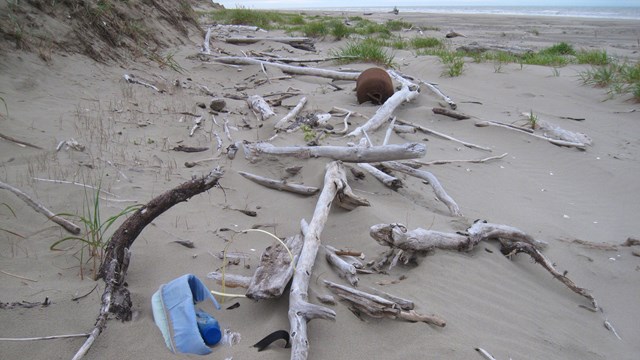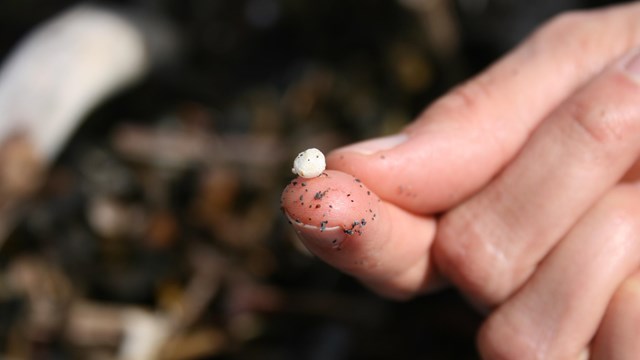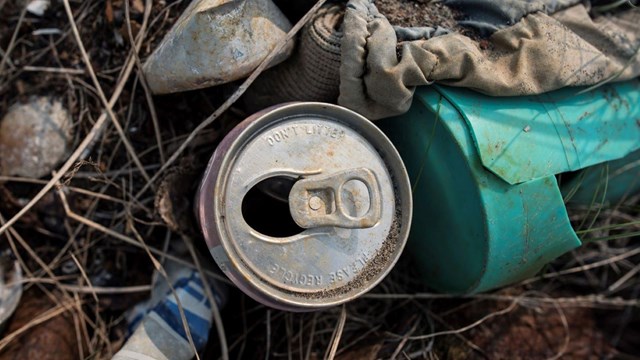|
The northwest Arctic shorelines are wild, dynamic, productive, and extensive. For thousands of years, people have relied upon these productive coastal areas and continue to do so today. Bering Land Bridge National Preserve helps protect 571 miles of coastal habitats including vast, shallow lagoons, large estuaries teeming with birds, sandy capes, salt marshes, mudflats, brackish wetlands, small freshwater lakes and ponds, dunes, and the world’s northernmost eelgrass beds. Barrier islands protect the lagoons and estuaries from the open ocean while hosting a tremendous diversity of wildlife including waterfowl, muskoxen, brown bears, and caribou. When marine debris enters these complex and intricately connected habitats, it can cause a wide range of impacts. 
NPS Photo / Savannah Glasscock HabitatsMarine debris can dramatically change critical marine habitats - scraping away, cutting into, or smothering vegetation and sediments.Once debris settles in the sediment, it becomes part of the habitat, taking valuable habitat away from species that rely on these environments. Marine debris can also contain toxins and contaminants, such as oil, insecticides, and poisons, which can affect habitats as well as animals. 
Image courtesy of USGS AnimalsFish, seabirds, seals, and whales, among other marine species, are harmed by marine debris in a variety of ways.Swallowing debris can take up stomach space, block digestion, puncture the digestive tract, or release toxic chemicals. Getting caught, or entangled, in marine debris can make it difficult for animals to move, find food, feed young, or find mates. Both ingestion and entanglement can have fatal consequences. The health of animals is central to maintaining thriving habitats and Arctic communities.
NPS Photo People
Communities on both sides of the Bering Strait depend on marine resources for subsistence, recreation, art, cultural purposes, and the health and well-being of families and communities. We can all help to keep marine debris out of the ocean and away from harming habitats, animals, and people!
Explore more about impacts of marine debris in this region:
Marine Debris
One big ocean, one big issue. 
Tiny Pieces, Big Impact
How do microplastics affect marine environments? 
How Can You Help?
Small decisions make a BIG difference. |
Last updated: October 6, 2023
